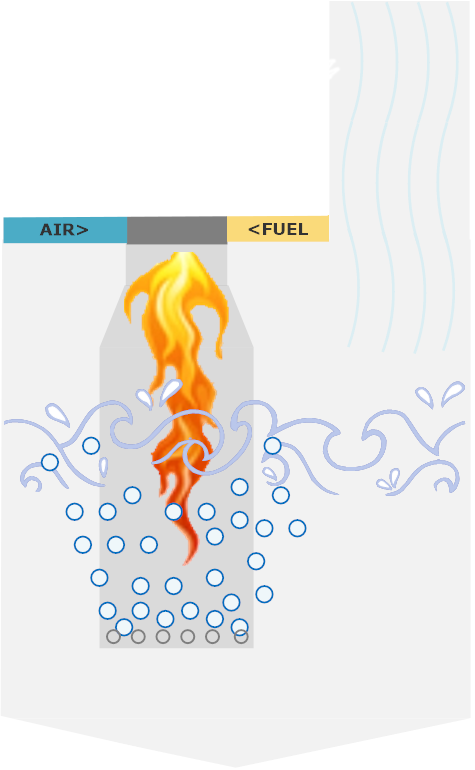BeneVap machines employ submerged combustion technology to evapoconcentrate wastewater. The process of submerged combustion was developed in the early 1900’s. It has been used for a variety of purposes, such as:
- Cracking crude oil
- Liquifying glass beads
- Melting snow
- Gasification of liquefied natural gas
- Evaporating water
Sometimes called ‘direct contact heat transfer,’ submerged combustion is a means of injecting the hot, gaseous byproducts of combustion into a liquid substance. This results in a highly efficient transfer of energy. The process is more energy efficient than a shell and tube heater and is less prone to fouling and scaling.
Submerged combustion evaporation or evapo-concentration typically employs a burner firing downward into a combustion chamber. A fuel such as natural gas or fuel oil is mixed with a pressurised air stream and ignited. The expanding hot gases are forced into the liquid and the hot exhaust bubbles do the work.
The bubbles emerge from the combustion chamber at nearly 1000 C. The greater pool of liquid is heated in the process, but the real action occurs inside the very hot bubbles. Water vapour forms at the bubble surface and diffuses inside the bubbles. The bubbles cool as they rise and are filled with water vapour. They break at the liquid surface and release water vapour which is vented to atmosphere.
These bubbles are hot enough to combust light hydrocarbons. There is evidence that some volatile organics are destroyed by this process.
